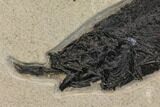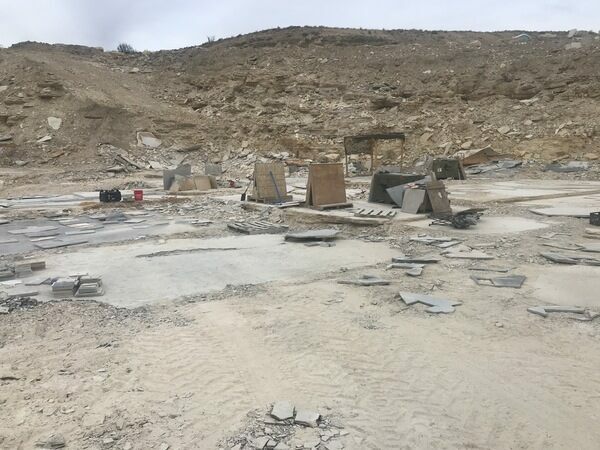This Specimen has been sold.
12.5" Mioplosus Aspiration (Died Choking On Prey) Fossil - Wyoming
This is a really unique piece from the Green River Formation of Wyoming. It is a 12.5" fossil fish (Mioplosus labracoides) that died while choking on another fish. It literally bit off more than it could chew.
Aspirations are an extremely rare example of behavior being preserved in the fossil record. In addition to the large Mioplosus, there is also a smaller Mioplosus and a Knightia naturally associated on the 19x12" slab of limestone.
Comes with a display stand, though we can add a backing and wall mounting hardware upon request.
Aspirations are an extremely rare example of behavior being preserved in the fossil record. In addition to the large Mioplosus, there is also a smaller Mioplosus and a Knightia naturally associated on the 19x12" slab of limestone.
Comes with a display stand, though we can add a backing and wall mounting hardware upon request.
About The 18 Inch Layer Of Fossil Lake
Specimens like this come from the coveted 18 inch layer of the Green River Formation, which produces darker and more detailed fish than the majority on the market. The rock from this layer is much harder and more durable than other layers in the formation, likely due to its initial deposition conditions in deep water. Because of these conditions, fish found in the 18-inch layer can be extracted whole and in excellent condition. This layer is typically collected at night using low-angle light to see the bump in the rock that the fish's backbone creates. They then cut these fish out and take them to a lab where the fish, which may be up to an inch under the surface of the rock, are meticulously extracted under microscope with hand tools.
Specimens like this come from the coveted 18 inch layer of the Green River Formation, which produces darker and more detailed fish than the majority on the market. The rock from this layer is much harder and more durable than other layers in the formation, likely due to its initial deposition conditions in deep water. Because of these conditions, fish found in the 18-inch layer can be extracted whole and in excellent condition. This layer is typically collected at night using low-angle light to see the bump in the rock that the fish's backbone creates. They then cut these fish out and take them to a lab where the fish, which may be up to an inch under the surface of the rock, are meticulously extracted under microscope with hand tools.
SPECIES
Mioplosus labracoides & Knightia eocaena
LOCATION
Kemmerer, WY
FORMATION
Green River Formation
SIZE
Mioplosus 12.5", Rock 19.2x12"
CATEGORY
SUB CATEGORY
ITEM
#151609
We guarantee the authenticity of all of our specimens.
 Reviews
Reviews















